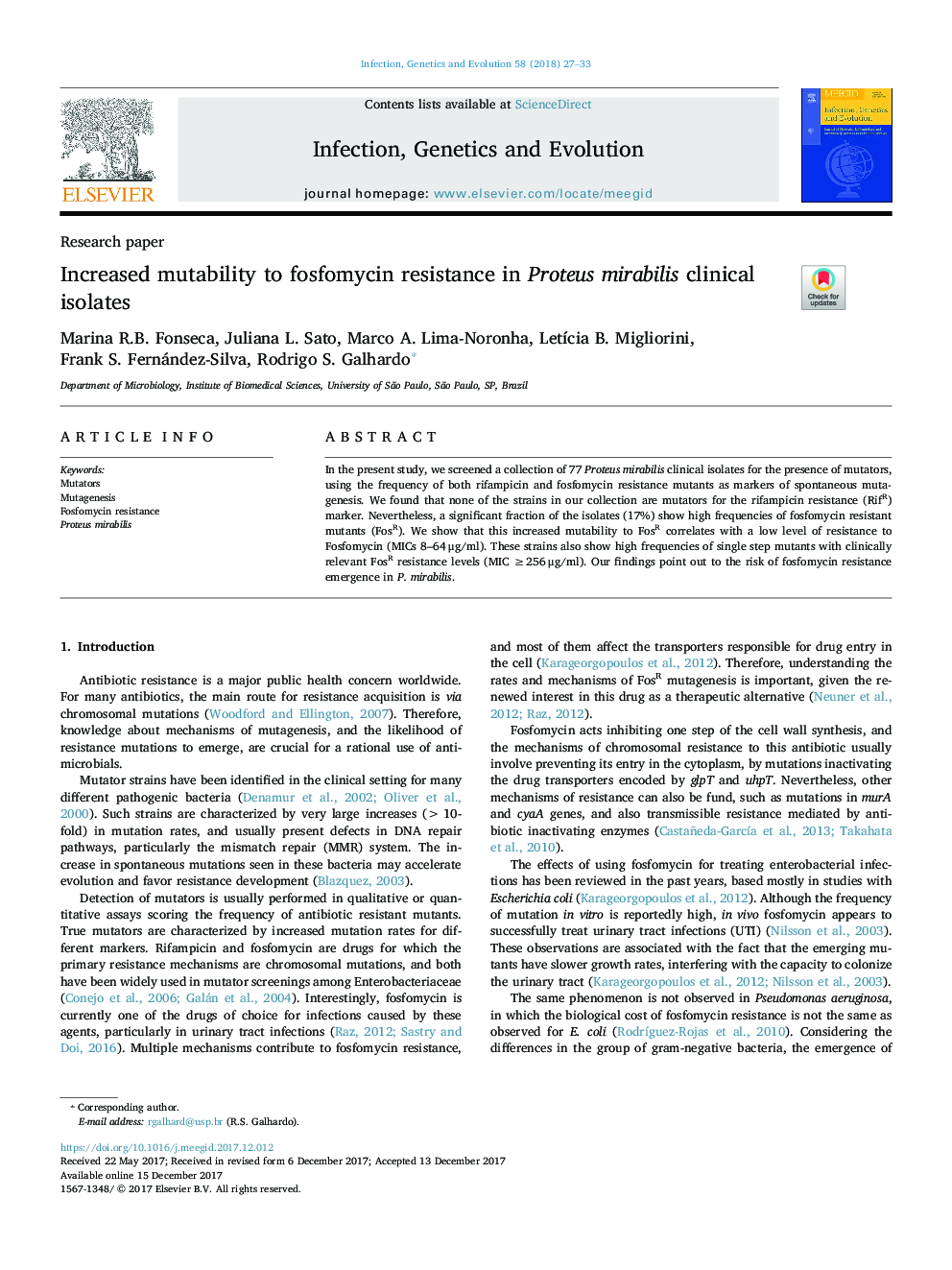| Article ID | Journal | Published Year | Pages | File Type |
|---|---|---|---|---|
| 8646951 | Infection, Genetics and Evolution | 2018 | 7 Pages |
Abstract
In the present study, we screened a collection of 77 Proteus mirabilis clinical isolates for the presence of mutators, using the frequency of both rifampicin and fosfomycin resistance mutants as markers of spontaneous mutagenesis. We found that none of the strains in our collection are mutators for the rifampicin resistance (RifR) marker. Nevertheless, a significant fraction of the isolates (17%) show high frequencies of fosfomycin resistant mutants (FosR). We show that this increased mutability to FosR correlates with a low level of resistance to Fosfomycin (MICs 8-64 μg/ml). These strains also show high frequencies of single step mutants with clinically relevant FosR resistance levels (MIC â¥Â 256 μg/ml). Our findings point out to the risk of fosfomycin resistance emergence in P. mirabilis.
Related Topics
Life Sciences
Agricultural and Biological Sciences
Ecology, Evolution, Behavior and Systematics
Authors
Marina R.B. Fonseca, Juliana L. Sato, Marco A. Lima-Noronha, LetÃcia B. Migliorini, Frank S. Fernández-Silva, Rodrigo S. Galhardo,
